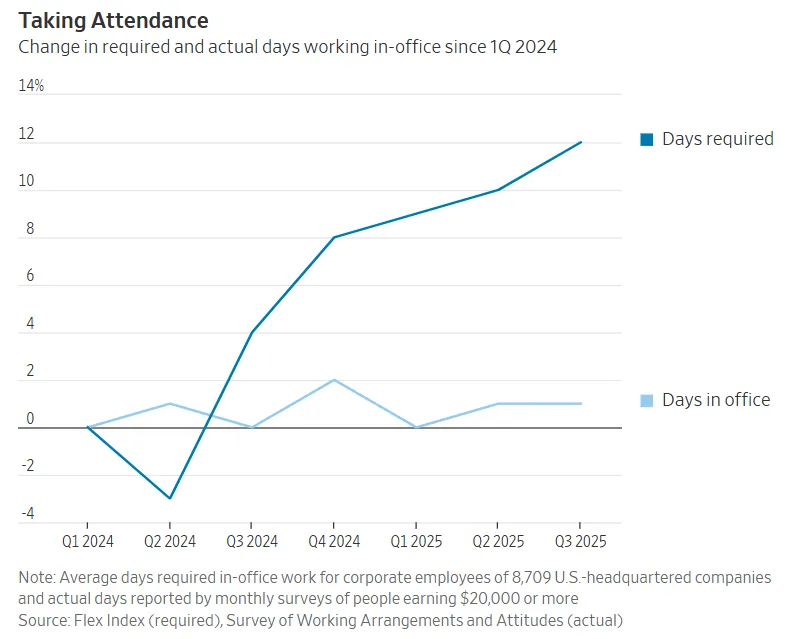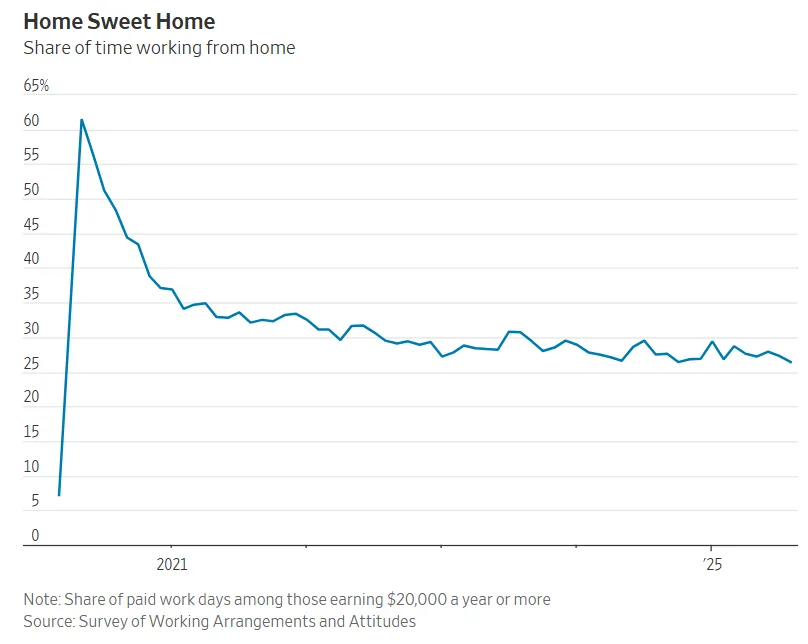- Return-to-office mandates are rising across major companies like Microsoft, Paramount, and NBCUniversal, with some tying continued employment to in-person attendance.
- Despite tougher rules, office attendance has barely increased, with hybrid work and soft enforcement remaining the norm across many industries.
- Managers are reluctant to enforce policies, top performers are often shielded, and logistical snags — like overcrowded offices — have slowed progress.
The Big Push
Corporate America is doubling down on return-to-office (RTO) policies, reports WSJ. Microsoft is pushing for employees to work in person three days a week. Paramount and NBCUniversal, meanwhile, have taken a tougher stance. Both companies have issued ultimatums: return to the office full time or take a buyout.

Even media giant The New York Times recently raised its in-office requirement to four days a week. According to workplace research group Work Forward, companies are demanding 12% more in-office time than at the start of 2024.
The Reality On The Ground
Still, US office attendance has remained flat. Hybrid work remains the dominant model. Americans are working from home about a quarter of the time. That figure is nearly identical to 2023, according to Stanford economist Nicholas Bloom.

Many companies are struggling to get employees back consistently. Enforcement is inconsistent, especially for high performers. Managers themselves often prefer remote setups and are reluctant to press the issue.
Logistical Headaches
Even when companies push for full return, infrastructure isn’t always ready. Amazon, for example, ran out of desks and parking spots when it called workers back en masse — prompting it to roll back the policy in cities like New York and Houston. Dell has faced similar issues.
At Axon, a gradual approach is in play: new hires must work in-office four days a week, but existing employees can maintain their hybrid schedules. Leadership says they’re playing the long game to avoid losing talent.
Get Smarter about what matters in CRE
Stay ahead of trends in commercial real estate with CRE Daily – the free newsletter delivering everything you need to start your day in just 5-minutes
Hidden Agendas?
In some cases, RTO mandates appear to double as layoff tools. Employers like Amazon, AT&T, and Dell have reportedly used stricter in-office policies to nudge employees out — reducing headcount without formal layoffs. The Federal Reserve even noted this trend in a recent report.
“The problem is, you don’t get to choose who leaves,” said Bloom.
What Compliance Looks Like
Badge data and Wi-Fi logs rarely get checked, unless someone is significantly absent. CBRE found that companies mandating just one day in-office saw near-perfect compliance. But for mandates of three or more days, compliance dropped below 75%.
In New York City, office activity is rebounding faster. Subway use is at post-pandemic highs, and downtown foot traffic in July surpassed 2019 levels. But nationwide, office visits remain about one-third below pre-COVID norms.
Why It Matters
The gap between corporate RTO rhetoric and employee behavior reflects a shifting workplace culture. Many workers, especially in smaller firms, now expect hybrid work as the default.
As office mandates ramp up, expect continued friction — and attrition — as companies try to balance in-person presence with flexibility and talent retention.
What’s Next
Despite the slow pace, most experts expect a continued push toward in-office work, especially from large employers. But full compliance may remain elusive — unless companies address not just policy, but infrastructure, management mindset, and employee expectations.
















